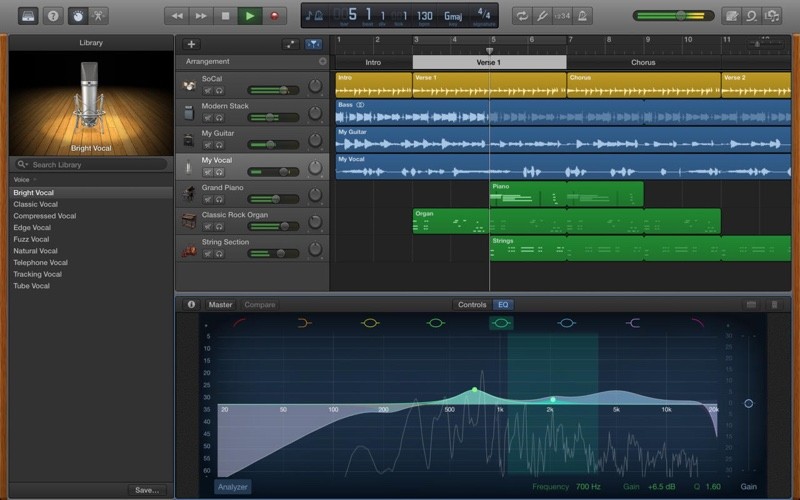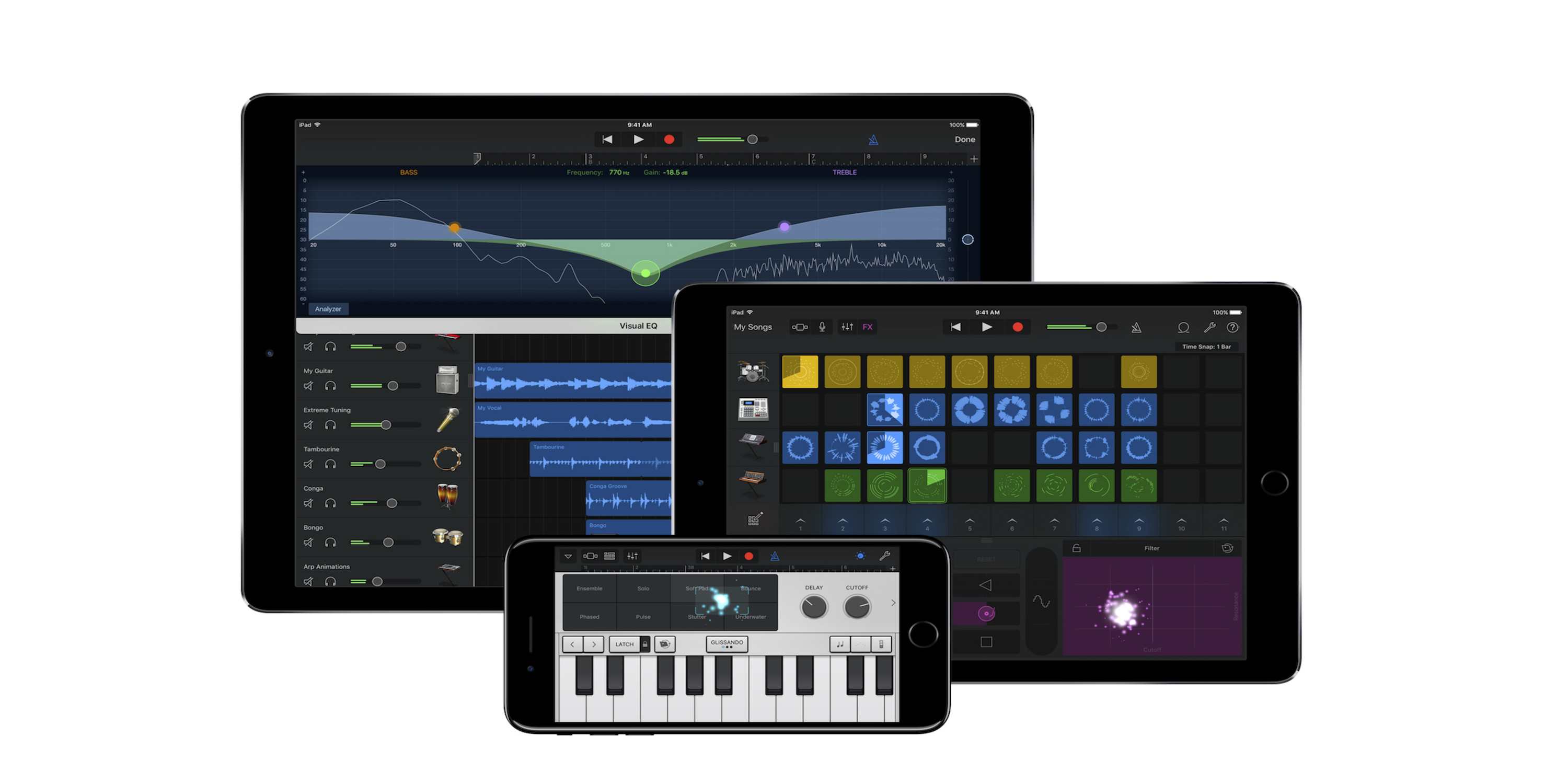
- #GARAGEBAND FOR MAC REVIEW HOW TO#
- #GARAGEBAND FOR MAC REVIEW FULL#
- #GARAGEBAND FOR MAC REVIEW DOWNLOAD#
Double click on any instrument and click “EQ” to bring up the visual equalizer. One of Garageband’s more powerful tools is the equalizer. This is also the way you can record your voice. This also works really well if you have a MIDI keyboard.Īlternatively, if you have actual instruments, you can play them and record them with your Mac’s microphone or any third party microphone compatible with your Mac. If you don’t feel like placing each note individually, you can hit the record button and play the notes on the Musical Typing keyboard.
#GARAGEBAND FOR MAC REVIEW HOW TO#
Making a melody can be difficult, but there are many tutorials on Youtube that can help out with learning how to construct working melodies and chords. You can hold down command and click to create notes in the editor. Double click the loop to open up to note editor. You can change the length of the loop by dragging it from the bottom-right, and you can loop it by dragging it from the top-right. Start by holding down command and clicking anywhere on the track to create a new, empty loop. If you don’t want to use Apple’s loops, and don’t have any actual instruments, you can write your own loops with the built in editor. It will likely create a new track which is used solely for Apple loops and samples. Once you’ve found one you like, you can drag it into your project. You can click on any loop in the list to listen to it before adding it to your project. For example, you could click “All Drums” and then “Electronic” to only display drum beats suited for electronic music. You can click multiple categories as well to refine your search terms even further.

From here, you can click on any category to only display loops from that category. Click the circular “loop” button in the top right corner, which will bring up the loops bin. We’ll start with the easiest, mixing with Apple’s samples.

There are three main ways to go about making music in Garageband: creating music from Apple’s samples, writing sheet music, or recording actual instruments. If you have a lead melody or bassline that you want the drums to follow, click the “Follow” checkbox and select which track you want the drums to follow. Most of the drums are automatic, and while there is a way to make your own drum beat, it isn’t recommended. You can change the drummer, change the complexity and loudness of the drums, and some settings for individual drum parts. The drums default to basic Rock drums, but you can change the genre by clicking the drum region which will pull up the settings.įrom here, you can tweak the settings for the drums. You should see a new yellow track for drums. This button adds a new track to your project. Start off by clicking the “+” button in the top right hand corner of the track list. There are three options, “Software Instrument”, which uses electronic keyboards and other computer-generated sounds “Audio”, which you can record from a real instrument or “Drummer”, which adds a drum machine to your song.
#GARAGEBAND FOR MAC REVIEW FULL#
Unless you have something in mind, “Empty Project” is usually the best starting point.Īfter you create a empty project, the full Garageband window will open, and ask you to add an instrument. For example, the “Electronic” template creates a new project with preconfigured synths and pads. Setting up a ProjectĪfter Garageband finishes downloading and installing all the loops it requires, you should be greeted by the new project window.įrom here, you can choose from many templates for your project, many of which come with preconfigured instruments.

These loops are part of Apple’s built in sound effects that you can mix and match in Garageband. This could take anywhere from a few minutes to a while depending on your Internet connection.

#GARAGEBAND FOR MAC REVIEW DOWNLOAD#
The first time you launch Garageband, it should ask to download a package of loops and samples.


 0 kommentar(er)
0 kommentar(er)
